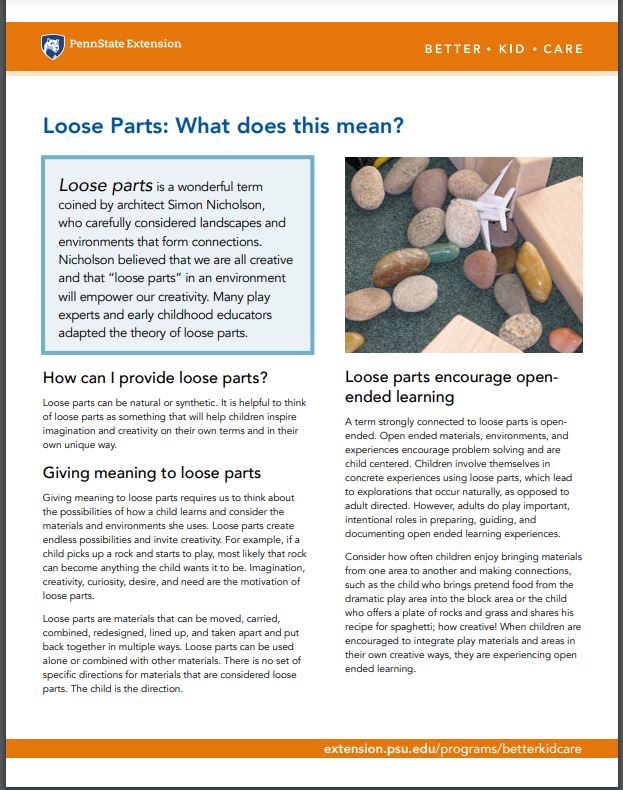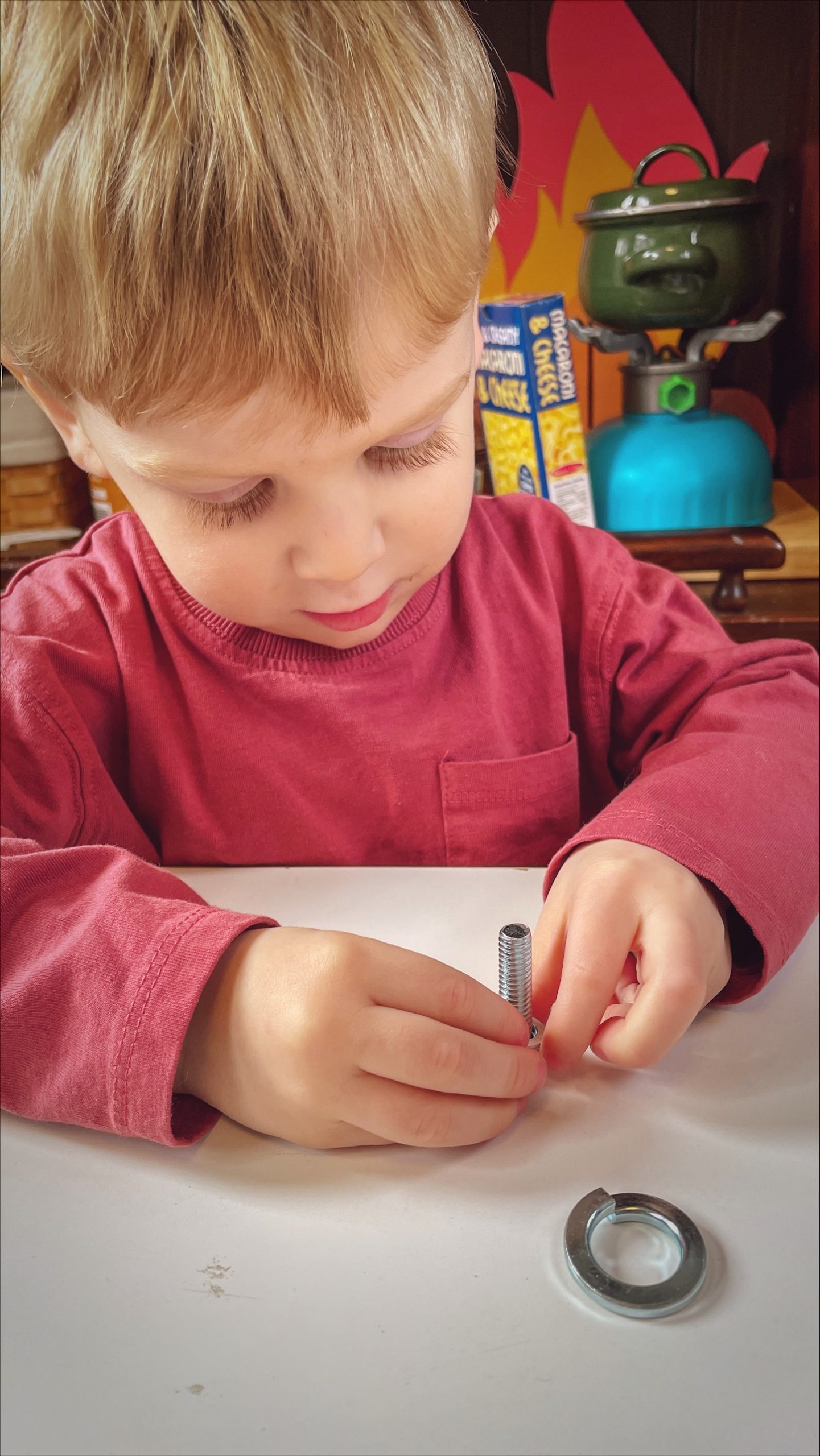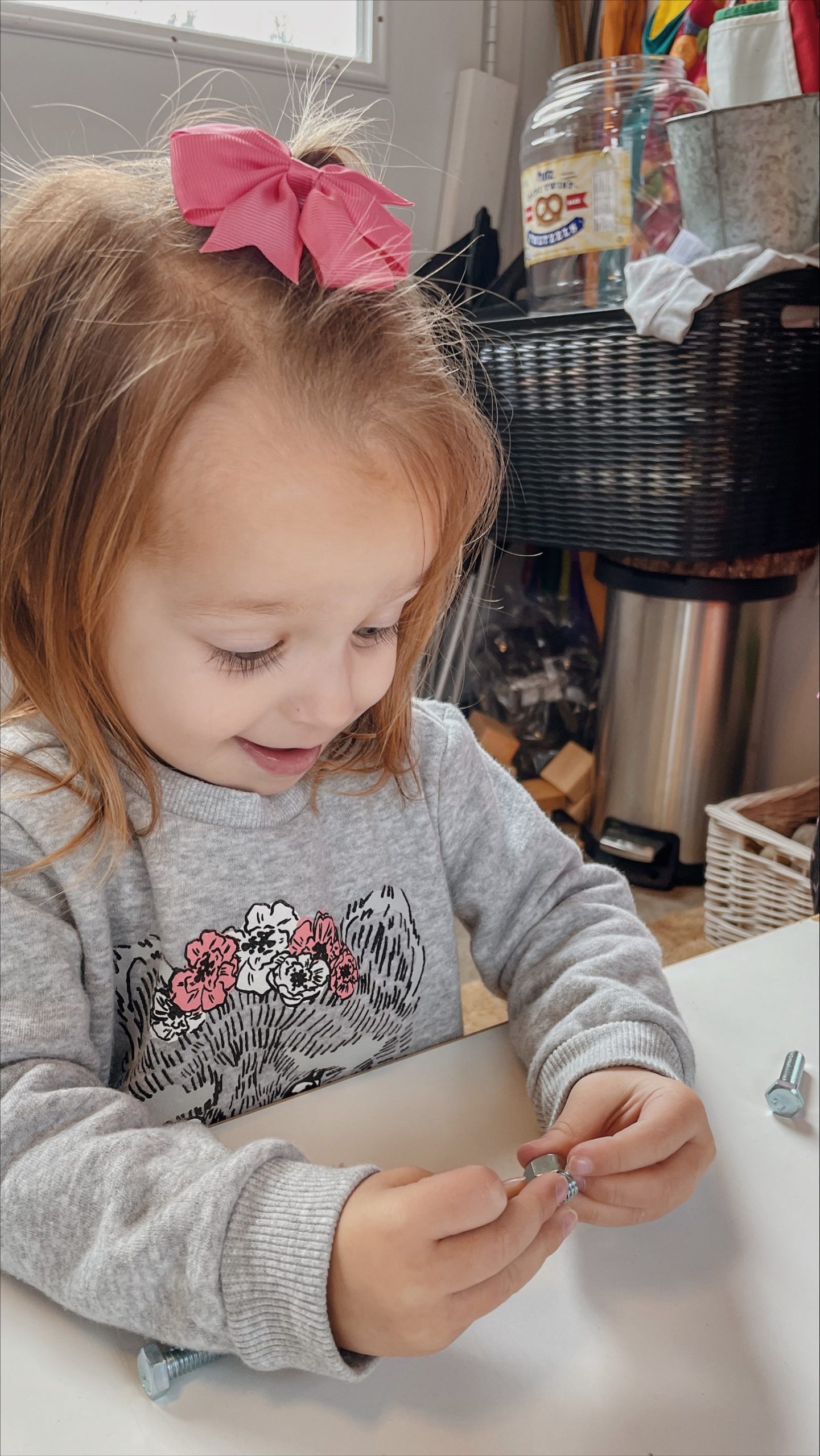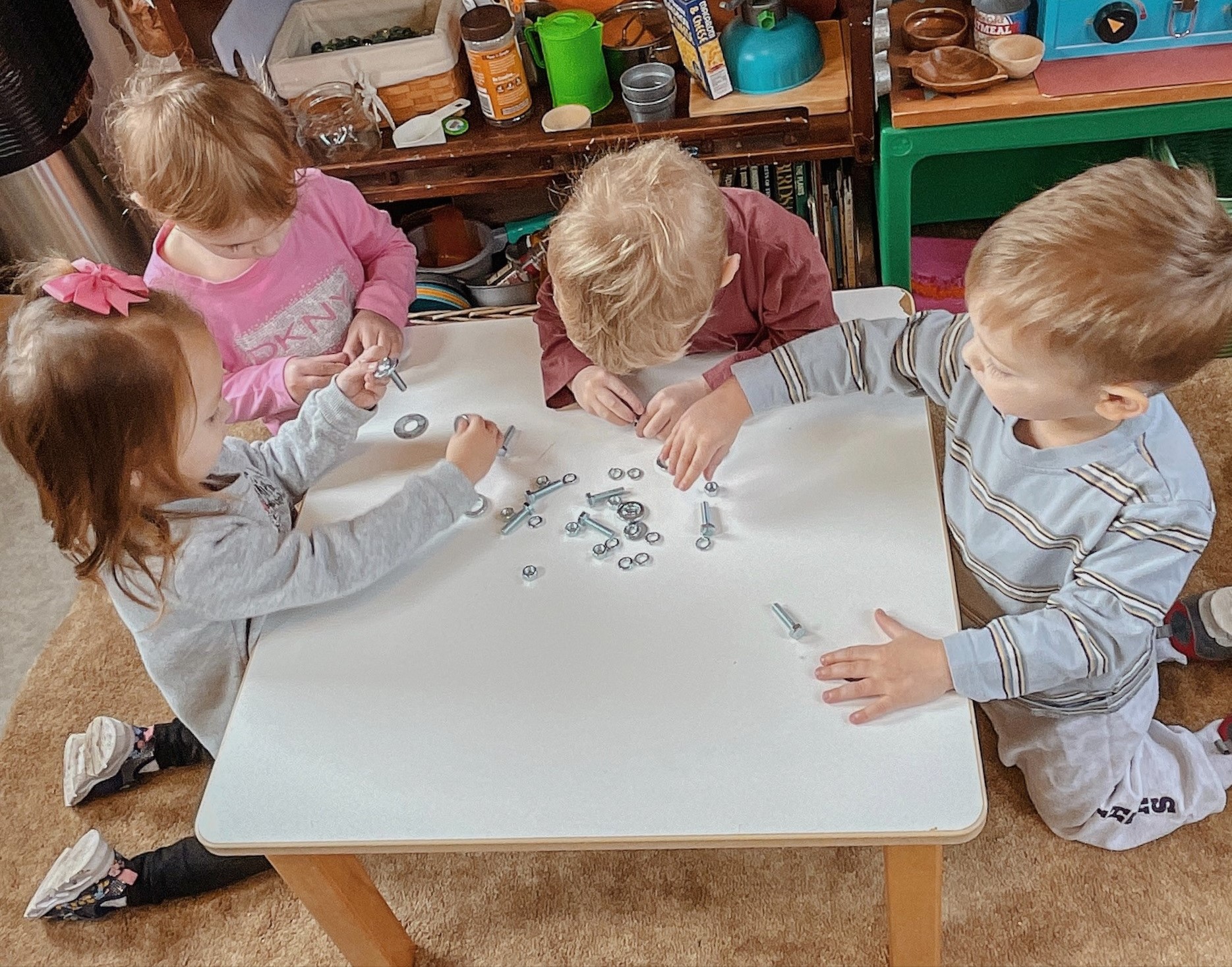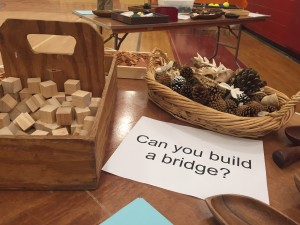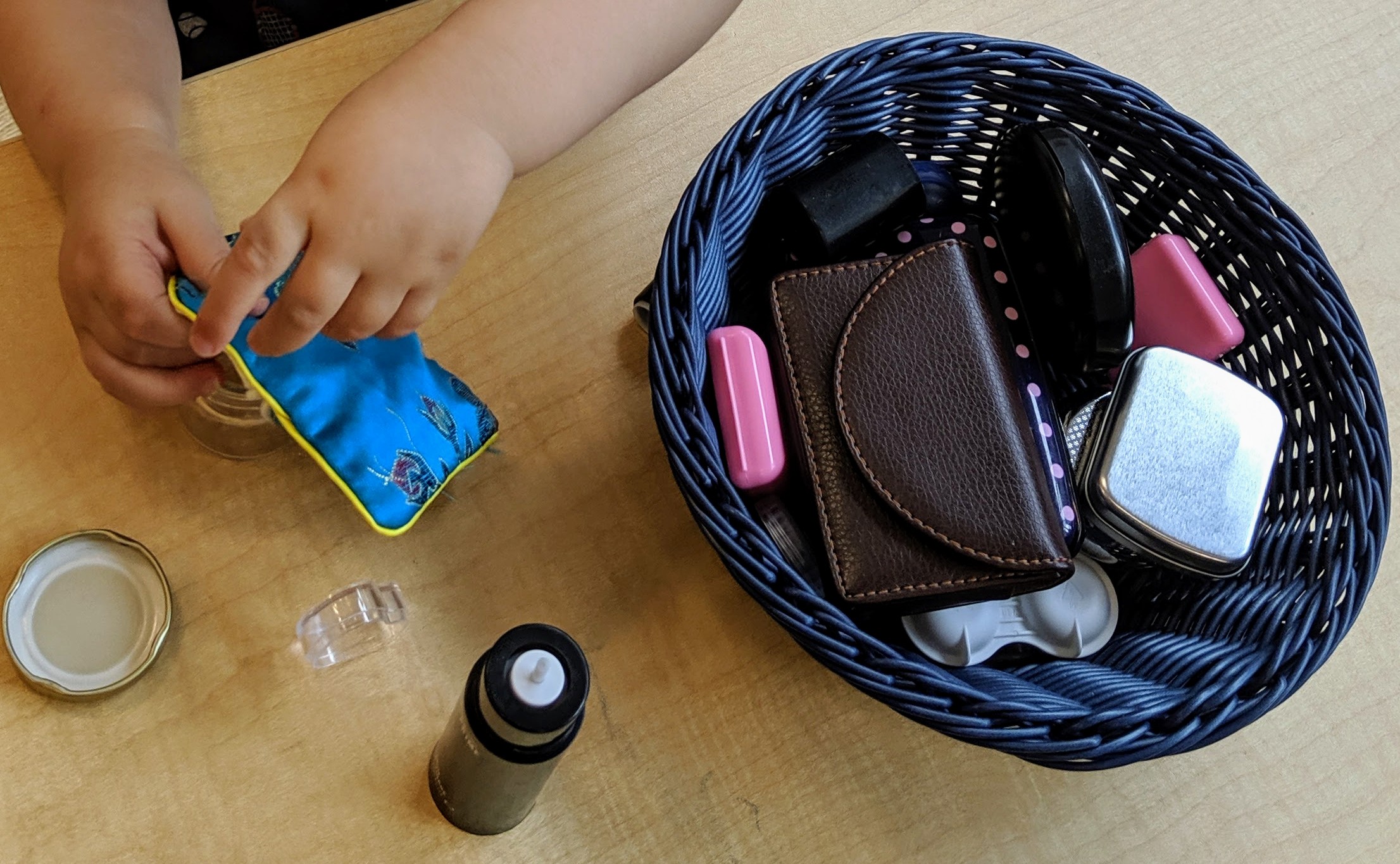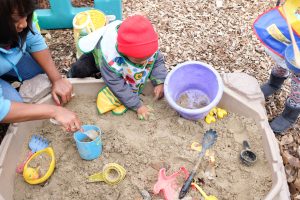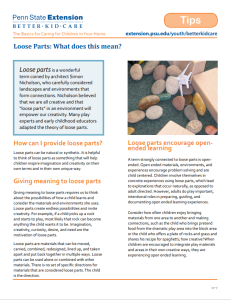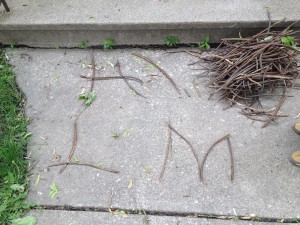Provide children with a large sheet of butcher paper and small trays or plates with paint to explore dipping and making marks with recycled materials such as toilet paper or paper towel tubes, containers of various shapes and sizes, materials with different textures, etc. This could be an activity that is available over several days that children can experiment with in a variety of ways.
Goal: Children will work collaboratively, use fine motor skills, and explore making marks with paint using a variety of recyclable materials.
Loose parts are materials that can be used in a variety of ways. Giving children the freedom to create, arrange, and construct as they want. Shifting the focus of the experience from product to process. Explore examples of loose parts and how to introduce them to children in this resource by The Penn State Better Kid Care Program.
Playing with Nuts and bolts
Nuts and bolts may seem like a simple activity, but it provides children with many great opportunities to explore and build on their skills.
- Fine motor skills.
* Hand and eye coordination as children grasp and pick their selection of bolts and then attach the nuts and bolts.
* Twisting, pinching, rotating give fingers muscles a workout, skills needed later for writing
- Math skills
* Giving children a variety of bolts and nuts allows them the opportunity to sort, match, categorize as they make a selection and plan how to use them.
* Create patterns, count and describing of different attributes including size
- Language skills
* Back and forth conversation as they work with other children
* Exploration and explanation of their creation and learning to others
- Creativity
* So much creativity as children came up with new ways to create and play, testing their ideas.
- Sensory experience
* Different textures, weights, sizes, and materials can be incorporated, experimenting with touch and sound.
Loose parts are materials that can be used in a variety of ways. It is very likely that you have things that can be used for loose parts play already around, such as bottle caps, rocks, pinecones, etc. This handout was created collaboratively between Town Square and the Early Math Collaborative at Erikson Institute as a resource for the Oak Park Collaboration for Early Childhood Symposium.
Encourage your school age children to create a collection. They might take a container or bag and collect some things that they find in nature while outside, or they might collect a variety of stray parts or art and craft materials from around your home. Ask them to sort their collection in different ways and involve the other children in viewing their collection and trying to discover their sorting pattern. Challenge them to sort their collections in multiple ways and describe the rules they have established for sorting.
Goal: Children will practice sorting materials by different attributes and describing the different qualities of the materials in their collection.
Town Square Research to Practice Statements offer information from theory and research with examples and suggestions for what it means in your work with children.
What are open ended materials? How can they be incorporated into your space to promote children’s development?
Town Square Research to Practice Statements offer information from theory and research with examples and suggestions for what it means in your work with children. This series of position statements includes topics such as the benefits of a home-like environment, the power of open-ended materials, and the benefits of incorporating the arts.
Town Square Research to Practice: The Power of Open-Ended Materials
You may have heard about the idea of loose parts and how wonderful they are for encouraging children’s exploration and play. This handout created by Penn State Extension offers tips for using loose parts, examples of types of loose parts, and outlines some of the benefits of play with loose parts. Chances are you have several loose parts for children to explore already in your home, so get them out and get ready to play!
Celebrate Earth Day by doing something good for the earth with the children in your care. These Town Square resources are some possibilities for using recyclables or taking advantage of nature.
Ask children to gather sticks (if outside) or provide Popsicle sticks or straws (if indoors). Then have children create shapes or letters using the sticks. Talk about the number of sticks you need to create specific shapes or letters and encourage the children to talk together about what they made.
Goal: Children will use sticks to create shapes and letters


